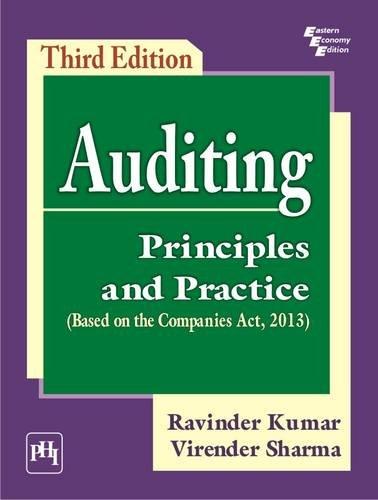Question
1. A typical rate formula for a public utility includes: Multiple Choice operating costs, bad debt provisions, and depreciation. advertising, depreciation, and taxes. operating costs,
1.
A typical rate formula for a public utility includes:
Multiple Choice
-
operating costs, bad debt provisions, and depreciation.
-
advertising, depreciation, and taxes.
-
operating costs, depreciation, and taxes.
-
revenue, operating costs, and taxes.
2.
Which of the following does not properly represent the relation of tax and GAAP accounting?
Multiple Choice
-
GAAP and tax depreciation expense will rarely be equal.
-
The accounting methods used for tax are permitted to differ from GAAP rules.
-
Companies using FIFO for financial statements prefer FIFO for tax purposes because FIFO results in a lower taxable income.
-
If LIFO is used for inventory valuation for taxes, LIFO must also be used for GAAP financial reporting.
3.
Which one of the following is not a broad function served by debt covenants?
Multiple Choice
-
Debt covenants offer the lender some protection against credit-damaging events affecting the borrower.
-
Debt covenants usually preclude the borrower from being a merger target.
-
Debt covenants are designed to preserve the borrowers repayment capacity.
-
Debt covenants serve as both signals and triggers, thereby assuring a steady flow of information from borrower to lender.
Step by Step Solution
There are 3 Steps involved in it
Step: 1

Get Instant Access to Expert-Tailored Solutions
See step-by-step solutions with expert insights and AI powered tools for academic success
Step: 2

Step: 3

Ace Your Homework with AI
Get the answers you need in no time with our AI-driven, step-by-step assistance
Get Started


